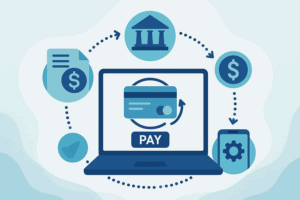
Crypto-backed loans are changing how people make big purchases. You can use your digital assets to get cash without selling them. This article explores why and how this financial shift is taking place.
Traditional financing involves a lot of paperwork, credit checks and sales of assets. And that can result in tax bills. Yet another kind of lending has arrived. It allows you to keep your digital money while getting the capital you need. Seeing how much finance is changing ties digital wealth closer to everyday spending.
Leveraging Digital Assets for Capital
For many people, crypto-backed loans are becoming a powerful financial tool. Imagine borrowing cash through Bitcoin loans or an Ethereum-backed loan from the top non-bank HELOC lender. Pretty compelling, right? These offers sometimes feature interest rates as low as 9.9% (11.00% APR), a fixed rate that stands out at 50% LTV in the industry. This gives a clear edge to those holding substantial digital assets. And this approach often sidesteps many old-school banking hurdles, making money access a bit easier.
This growing approach means you can keep your cryptocurrency holdings right where they are. You get the cash you need for big purchases or other investments without selling your digital assets. This move can save you from potential capital gains taxes you would face if you just sold your crypto. These loans often look a lot like traditional ones, but they use a digital asset, sometimes volatile yet often valuable, as collateral.
Global Adoption and Mortgage Innovation
Australia now lets citizens use Bitcoin for a mortgage, following a path other countries have started. This financial shift helps people use their BTC as collateral for home loans. They do not have to sell their digital assets. It can also help ease housing affordability problems across the country. The general scheme lets borrowers use Bitcoin as security for a cash loan covering up to 50% of a property’s value. This part typically covers the deposit for a home, with a regular lender covering the rest.
A third-party custody platform usually keeps the Bitcoin collateral secure. These loans frequently offer flexible repayment options. They might be interest-only for up to four years. At the loan term’s end, borrowers can pay back the principal with cash, cryptocurrency, or simply refinance. This flexibility really helps those who want to manage their money smartly.

The rise of Bitcoin mortgages happened after a major legal decision. A federal court ruled that cryptocurrency loan products did not fit the Corporations Act’s definition of “financial products.” This meant companies did not need an Australian Financial Services Licence, clearing many legal obstacles for crypto-backed lending.
Bitcoin’s Mainstream Adoption and Market Realities
Bitcoin has certainly come a long way since it first appeared in 2010. Many people still doubted it during the 2022 bear market. But, sentiments may turn bearish again in the next six months as another bear market approaches. That won’t change how mainstream BTC has become. You see hundreds of public companies and dozens of countries holding BTC in their treasuries. National housing commissions even approve BTC use for mortgages. Its widespread acceptance is clear.
Using BTC for mortgages might seem appealing, letting holders use their crypto. But price swings during bear markets can bring trouble. Prices often fall quickly and sharply in those times. The U.S. has also opened the door for more crypto adoption by approving three new crypto bills. These bills could set a standard for the rest of the world.
The Broader Financial Landscape
Online financial education continues to grow, with new platforms making financial literacy more accessible. These resources often use technology to simplify complex financial ideas. They connect individuals with experts and offer practical learning experiences. For instance, the site WealthyByte provides tools for users to spend, save, and grow their wealth wisely.

Planning your investments is key to reaching financial goals. Whether you are saving for retirement or growing a business, investing without a solid plan often leads to unnecessary risks and losses. But with good research and careful planning, many pitfalls can be avoided. For example, if you start investing $500 each month at age 25 with a 7% average return, you could have around $1.2 million by age 65. That is the long-term impact of consistent, planned investing.
Managing your taxes is crucial for reducing your tax burden and maximizing investment returns. Strategies include shifting income to lower your taxable amount, utilizing tax credits and deductions, and contributing to tax-advantaged retirement plans like a 401(k) or IRA. Health savings accounts can provide triple-tax benefits, and holding investments for over a year may qualify them for lower long-term capital gains tax rates. It’s not just about earnings; it’s about what you keep after taxes.
Navigating the Future of Digital Finance
The rise of crypto-backed loans marks a significant shift in how digital assets are perceived and used. Cryptocurrencies are evolving from speculative investments to practical financial tools. This change highlights the need to understand both the opportunities and risks involved as digital assets become more integrated into the broader economy.
For those thinking about these new financial paths, being careful is crucial. You must understand the terms, what collateral is needed, and how market changes might affect digital assets. As more people accept crypto, more structured rules are coming into place. This offers more clarity and security. How will governments adjust to these fast-changing financial products? That remains an important question.















